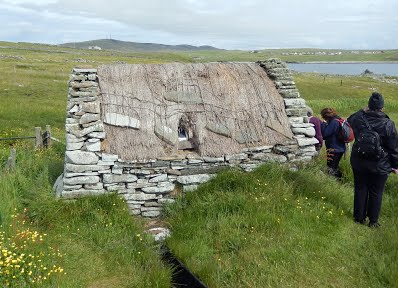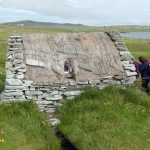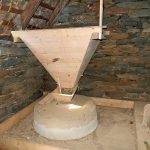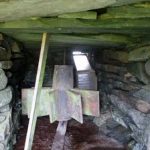
No. 509 AUGUST 2013 Edited by Vicki Baldwin
HADAS DIARY
Lectures are held at Avenue House, 17 East End Road, Finchley N3 3QE, starting at 8pm, with tea/coffee and biscuits afterwards. Non-members are welcome (£1.00). Buses 82, 125, 143, 326 and 460 pass nearby. Finchley Central Station (Northern Line) is a short walk away.
Sunday 15th September to Thursday 19th September Buxton Trip. See February newsletter for details, or contact Jim & Jo Nelhams (020 8449 7076).
Tuesday 8th October, 8pm Brunel’s Tunnel under the Thames. The first tunnel under a river anywhere in the world, built by Sir Marc Brunel and his son Isambard Kingdom Brunel (then only 19 years old). A lecture by Robert Hulse, Director of the Brunel Museum.
Tuesday 12th November, 8pm The Lions on Kunulua: excavations of the Early Bronze and Iron Age periods at Tell Tayinat, Hatay, Turkey. Lecture by Dr. Fiona Haughey.
Sunday 1st December, 12 noon – 4.30 pm (approx.) HADAS Christmas Party at Avenue House. Buffet lunch. Price £25 to include one drink. Cash bar. Booking details coming soon.
LAMAS Historic Buildings and Conservation Committee Peter Pickering
I am a member of the Historic Buildings and Conservation Committee of LAMAS. We are holding a conference on Saturday 28th September. This is a new venture – LAMAS has long held annual conferences on archaeology and on local history; but this is the first to deal specifically with the built heritage and the pressure it is under in the modern world where major redevelopment is seen as the way back to prosperity out of recession. There will be talks about historic buildings in the London area of all periods from Roman to the twentieth century, and three studies of very recent contentious cases (the Deptford Dockyard, the Middlesex Hospital site with the nearby workhouse which may or may not have been the model for the one in Dickens’ Oliver Twist, and King’s Cross station). The conference will be in The Gallery, 75 Cowcross Street (very close to Farringdon Station), and the cost will be £30 including lunch and refreshments; that will give everybody an opportunity of talking informally with the speakers. Tickets can be obtained on the LAMAS website or from Richard Buchanan 79 Ashridge Crescent, Shooters Hill, London, SE18 3EA, cheques payable to LAMAS; please send a stamped addressed envelope or e-mail address for acknowledgement.
Bankside STEWards would like to invite you to join them at the Firing on the Foreshore event at the Thames Festival 14 September 2013
foreshore2007 080_edited
Come and join us on the river stairs in front of the Globe Theatre where there will be a display of Thames finds for you to look at from 12.30pm to 6pm. Hear the story of the witch bottles, the clay pipes, Bankside pottery and see what people ate in the past.
At 2pm, there will be an archaeological walk along the foreshore led by Dr Fiona Haughey
– discover 10,000 years of London’s history beneath your feet.
From 12.30pm until covered by the incoming tide, pots made from Thames river clay will be fired in a bonfire constructed on the foreshore from river driftwood – a technique used by Britain’s first potters in 4,000 BC.
THIS IS A FREE EVENT – NO NEED TO BOOK JUST TURN UP!!
Bankside STEWards are a network of local residents and business contacts committed to caring for and promoting the past, present and future of the archaeology and environment of the Thames foreshore between Blackfriars and London Bridges at Bankside. They are an Adopt-a-River group of Thames21.
Fiona is also looking for any volunteers to help on the day – she will be needing people from 11am to about 6pm but even an hour or two of their time would be most welcome!! In the past there have been in the region of 2000 visitors to the table and onto the foreshore. Fire Marshalls are needed on the foreshore, aid with those going down (a quick H&S briefing and signing a form), and help at the table. No previous knowledge/experience necessary – instructions will be given on the day, as well as access to crib sheets for those on the table – although the pottery experience of some HADAS members will be invaluable here!!!
It is great fun – the general public’s insatiable appetite for archaeology never ceases to amaze Fiona and they seem particularly proud of the ‘home-grown’ variety from the foreshore. Refreshments will be provided! We meet by The Globe stairs. This year the Thames Festival has finally decided to concentrate on the river rather than land-based activities. The Firing event has been always based on the river and the Festival are keen to have us (it only took a decade…..) so please come and help us spread the knowledge of all that can be found beneath your feet!!
Contact Fiona (see details below) with any queries and further details.
In addition, if you’d like to come and play with Thames clay to make the pots we fire on the foreshore, you’d be more than welcome! We are doing this on August 20th between 12.30pm-2.30pm on the Globe river stairs. The clay comes from the footings of the Millennium Bridge and also from Deptford Creek. No previous experience necessary!
Dr Fiona Haughey
Archaeologist & Archaeological Illustrator; Director Archaeology on the Thames Project
27 Spring Grove, Strand-on-the-Green, London W4 3NH Tel: 07957 742 789
fiona_haughey@yahoo.co.uk
Royal Archaeological Institute Visit to Germany Peter Pickering
I have just returned from a visit to Germany with the Royal Archaeological Institute. We were based in Frankfurt, and saw a wide variety of sites, from the prehistoric to a nineteenth century Prussian fort. The museums were beautifully presented and had large numbers of important and interesting objects on show; the labelling seemed informative, but did require better German than I possess (we usually had a guide, which greatly helped); apart from our group there were few people in them – what a contrast to the crowded museums of London! The most memorable site was the Glauberg, a Celtic/Iron Age hillfort where several princely graves were discovered in the 1990s; most amazing is a life-size statue of a man, perfectly preserved except for the feet, in armour and wearing jewellery, and on his head an asymmetrical headdress said to be mistletoe leaves.
Did you know….. Peter Pickering
….that Alexandra Palace was used during the First World War for the internment of German civilians who had been living in London, many with English wives and families? I did not until I heard a talk by Maggie Butt of Middlesex University, which she illustrated, movingly, with extracts from letters written by inmates, and with paintings by one of those internees.
South American Road Trip Tim Wilkinson
Over the past twenty years or so there have been a series of spectacular excavations in Northern Peru, including multi-level royal tombs, and pyramid complexes dating contemporaneously with the earliest pyramids in Egypt. These discoveries have greatly redefined thinking on pre-Inca civilisations in South America.
We decided that it would be fun to go and look at some of these and, while we were there, also take in Chile, Bolivia and Ecuador.
We started in Chile, which was interesting – very civilised but such a long, long, way from anywhere. It really felt like the end of the earth. For us, the highlight was to go to the Elqui Valley and the Atacama desert, both centres of astronomy with no rain, no pollution, no light problems,
clear skies, and so many of the world’s most advanced observatories, both optical and radio. I know the sky is full of stars but until we went to Chile we didn’t realise how true that was. In fact the Milky Way is so full of stars that it really does look milky! We visited one of the many observatories situated in the mountains and spent a couple of hours looking at the dark bands around Jupiter, Saturn’s rings, star clusters of millions of stars in our own galaxy, and a globular galaxy containing billions of stars. We stayed in a hotel with rooms of geodesic domes and opening roofs so we could lie in bed and watch the sky all night. Not mush archaeology, although we did visit a small fortified hill village from the Tiwanaku civilisation that had been taken over and used later by the Inca.
From Chile we moved into Bolivia through an unusual land crossing – we didn’t see a road for two days, just mountain tracks between lakes and volcanoes, around bubbling hot springs and geysers, at heights of up to 5000 metres (it’s the first time I’ve seen an altimeter in a car’s instrumentation!). We crossed the Uyuni salt flats, which are 150 miles long and 50 miles wide, and up to La Paz, where we went to the first major archaeological site at Tiwanaku outside of La Paz.
Dating from 2500 BC to 1200 AD, the Tiwanaku civilisation was based here but spread across Peru and Northern Chile. It all fell apart about 1200 AD after a prolonged period of drought and there were just small communities left when the Inca arrived in 1400 AD. Most of the visible remains at the site date from 300 AD to 600 AD. They consist of stepped pyramids of seven layers in a T-shape rather than the usual rectangle or square. There were sunken courts with carved head embedded in the walls, monolithic statues, sun gates and water courses with extensive raised beds for growing crops. The site suffers from poor excavation in the early 1900’s, and poor reconstruction in the 1960’s, but still a fascinating and spectacular introduction to pre-Inca South American cultures
…. and on to Peru. In the next episode – sites in Northern Peru dating back to 3000BC.
Picture 1: Tiwanaku main gate:
Tiwanaku monolith through main gate
Picture 2: Carved heads at Tiwanaku:
Carved heads in the Kalasasaya
The Croft watermills of Shetland Don Cooper
On a recent visit to the Shetlands we were lucky to be accompanied by Martin Watts one of the foremost experts on watermills in the UK and his wife Sue an expert on quern stones. What fascinated me was that, unlike the rest of the UK, the crofters on Shetland built their own personal water mill rather than take their corn to some central large mill, of which there didn’t seem to be any on Shetland.
When the corn was harvested each summer it was dried, often in the crofter’s own kiln attached to the cottage – there is an example of one at the Shetland Croft Museum. To quote from the Shetland Museum and Archive:
“At one time every croft house had its own kiln for drying corn in preparation for grinding. These were normally rectangular stone constructions that occupied one corner of the barn. However, in the Dunrossness area, where the Croft House Museum is situated, they took on a distinctive circular shape. The kiln was usually built as an appendage to the barn and was accessed via an opening on the inside. From here sticks were laid across the diameter of the kiln to form a platform, on top of which a layer of straw acted as bedding for the grain. A fire was then lit at the end of a small tunnel that led out from the base of the kiln. The heat would rise up from beneath the sticks and dry out the grain.”
When the corn was dry it needed to be ground to make flour, that’s when the croft water mill played its part. The mill was a small dry- stone walled built structure with a thatched roof by the side of a stream. (See photographs below)
The water was diverted from the stream by means of a sluice gate and channelled to the mill in a gutter-like drain. The inside of the mill was on two levels. The upper level was a room that contained a hopper, two millstones and a receiving tray. The lower level was where the diverted water drove a shaft by turning a number of paddles attached to the shaft, this in turn turned the mill stones, so that when a bucket of corn was added to the hopper the turning millstones slowly ground the corn. The water flowing out from the mill is then rechanneled back into the stream.
There are a great many streams flowing down from the hills to the sea on Shetland and as it passed through many crofter’s land on its way, each could have their own individual mill. Mr Smith of the Croft Museum told of a stream that had had nine mills running off it.
Acknowledgements:
Martin and Sue Watts for explaining how the mill works, Shetland Croft Museum, Shetland Museum and archive, Jo Nelhams for one of the photos. Any errors are of course exclusively down to me!!
Fig. 1: Rear-view of a small crofter’s mill, note the water drain diverted from the stream
Figure 2: The hopper, millstones and tray
Figure 3. All is not well down below – but you can see how it should work.
Correspondence
The following letter by Brian Warren has been received in response to the article by Frank Baldwin concerning the Battle of Barnet, reproduced in HADAS Newsletter 508 July 2013:
“Dear Editor,
When an article by Frank Baldwin, on the Battle of Barnet, similar to the one in Newsletter 508, first appeared in the East Herts Archaeological Society’s Newsletter 33, in September 2012, I wrote to him concerning the north/south alignment of the Battle. The correct sequence is to be found in “Reappraisal of the Battle of Barnet 1471” published by Potters Bar and District Historical Society 2009, on pages 36-37.
As can be seen from the plan of the Battle on p.27 in the above publication, the proposed site of the Battle was further north than previously proposed mainly due to the location of the chapel. Whilst my research was regarded as ‘a remarkable piece of work’ I am of the opinion it was then confirmed by the Trust’s project officer, Dr. Glenn Foard. It is important the sequence is recorded correctly for posterity.
Yours sincerely,
Brian Warren”
WHAT’S ON Eric Morgan
Monday 9th September, 3pm Barnet Museum & Local History Society, Church House, Wood Street, Barnet (opposite Museum). The Story of the Long Bow – Bob Hanley. £2
Tuesday 10th September, 7.45pm Amateur Geological Society, The Parlour, St Margaret’s Church, Victoria Avenue N3 1BD (off Hendon Lane). Fossils on Solnhofen – Dr. Chris Duffin (Geological Society, Geologists’ Association).
Friday 13th September, 8pm Enfield Archaeological Society, Jubilee Hall, 2 Parsonage Lane/junction Chaseside, Enfield EN2 0AJ. The Chiselden Cauldrons – Alexandra Baldwin (B.M.). Visitors £2. Refreshments, sales, info 7.30pm.
Saturday 21st & Sunday 22nd September London Open House Weekend. Free access to over 750 buildings. Details at www.openhouselondon.org.uk incl. Saturday 21st 10am-4pm Myddleton House Gardens, Bulls Cross Enfield EN2 9HG, magnificent house of E.A. Bowles (HADAS did resistivity here); Saturday 21st & Sunday 22nd Three Mills House Mill & Green, Three Mills Lane, Bromley-by-Bow E3 3DU – 20min. guided tour of the grinding stones & waterwheels is available www.housemill.org.uk (I admit to a fondness for this place as I am privileged to be able to rehearse here occasionally! VB)
Wednesday 25th September, 7.45pm Friern Barnet & District Local History Society, St. John’s Church Hall (next to Whetstone Police Station), Friern Barnet Lane N20. Stained Glass – talk by Helene Davidian. Visitors £2. Refreshments 7.45pm & after.
Thursday 26th September, 8pm Finchley Society, Martin School, High Road East Finchley N2 (entrance at end of Plane Tree Walk). History of the Martin School – which is celebrating its centenary this year. Please note change of venue. Non-members £2. (HADAS have been digging here this summer).




